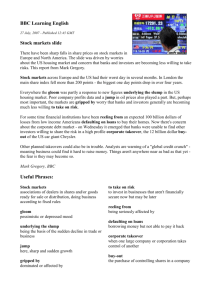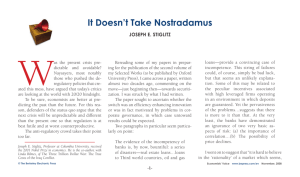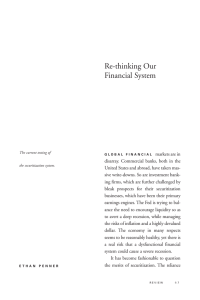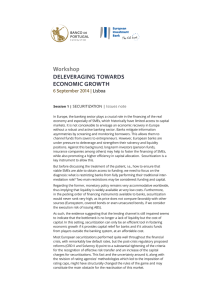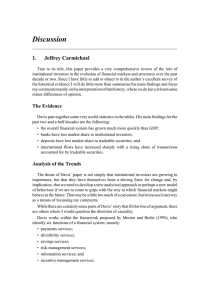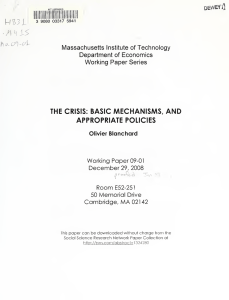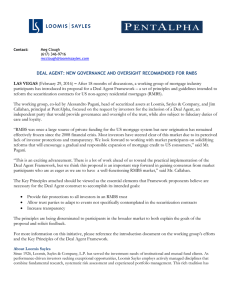Strategic Opaqueness: A Cautionary Take on Securitization Ana Babus Maryam Farboodi
advertisement
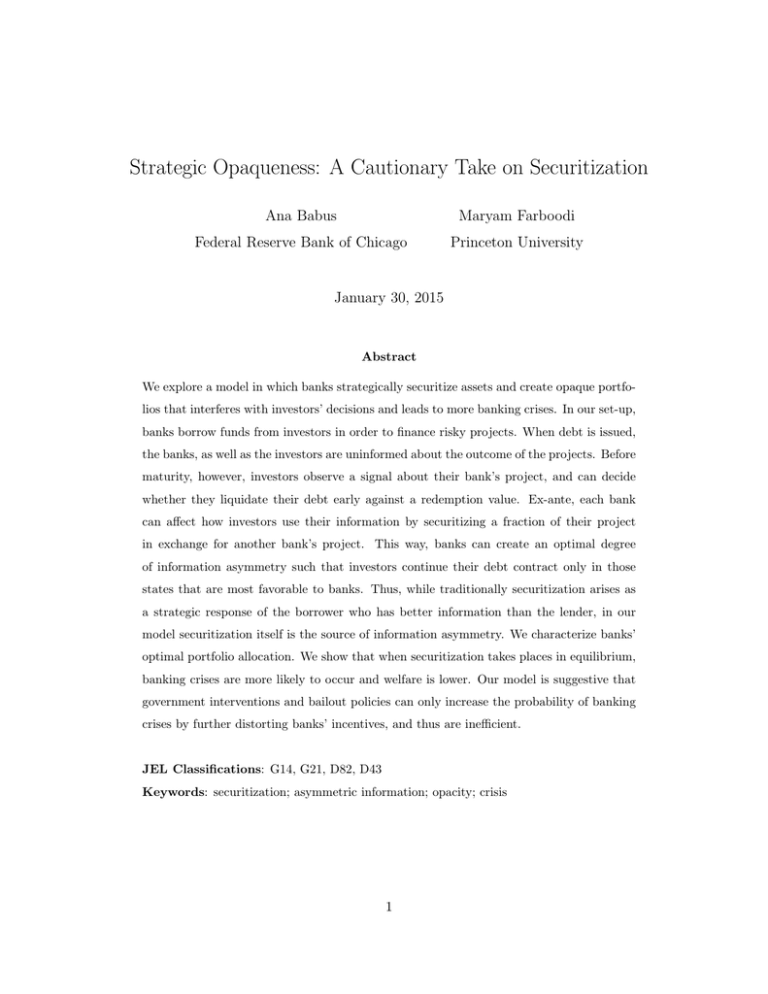
Strategic Opaqueness: A Cautionary Take on Securitization Ana Babus Maryam Farboodi Federal Reserve Bank of Chicago Princeton University January 30, 2015 Abstract We explore a model in which banks strategically securitize assets and create opaque portfolios that interferes with investors’ decisions and leads to more banking crises. In our set-up, banks borrow funds from investors in order to finance risky projects. When debt is issued, the banks, as well as the investors are uninformed about the outcome of the projects. Before maturity, however, investors observe a signal about their bank’s project, and can decide whether they liquidate their debt early against a redemption value. Ex-ante, each bank can affect how investors use their information by securitizing a fraction of their project in exchange for another bank’s project. This way, banks can create an optimal degree of information asymmetry such that investors continue their debt contract only in those states that are most favorable to banks. Thus, while traditionally securitization arises as a strategic response of the borrower who has better information than the lender, in our model securitization itself is the source of information asymmetry. We characterize banks’ optimal portfolio allocation. We show that when securitization takes places in equilibrium, banking crises are more likely to occur and welfare is lower. Our model is suggestive that government interventions and bailout policies can only increase the probability of banking crises by further distorting banks’ incentives, and thus are inefficient. JEL Classifications: G14, G21, D82, D43 Keywords: securitization; asymmetric information; opacity; crisis 1



